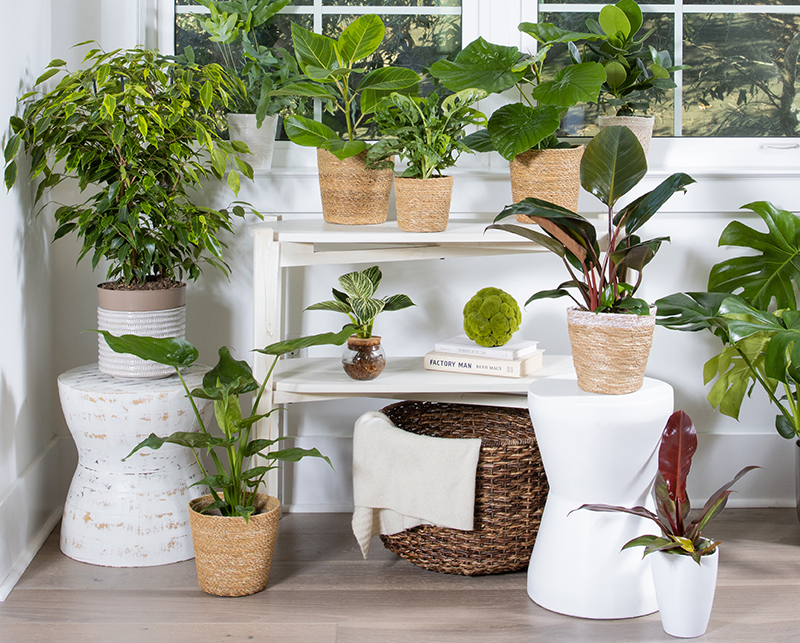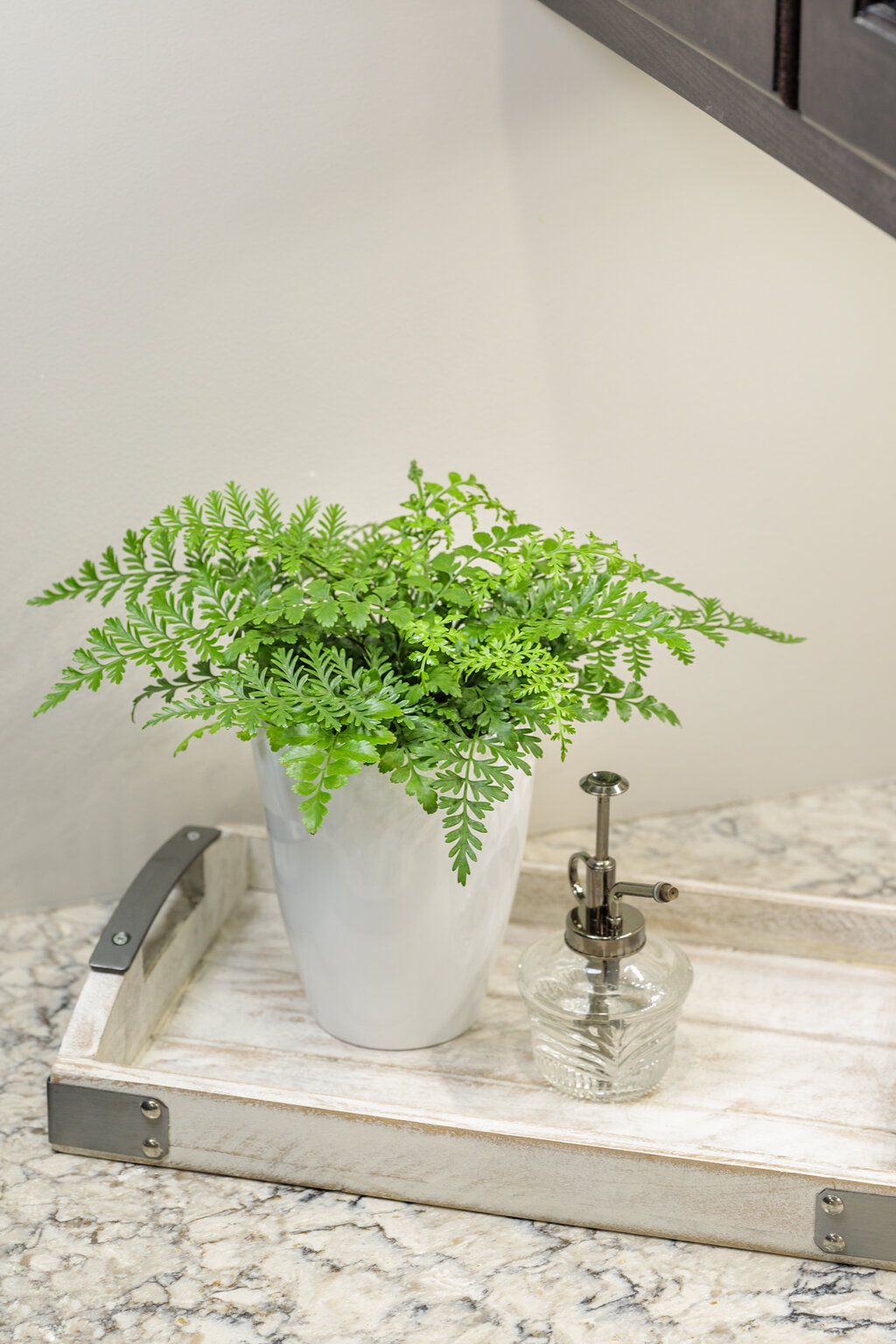Indoor Plant Care 101 - The Ultimate Houseplant Growing Guide
How to grow plants inside that look beautiful and healthy

Check here to see if your Local Garden Center or The Home Depot® is carrying leafjoy®.
Growing houseplants is a great way to add lush greenery to your home or office all year round. With the surge in popularity of houseplants in recent years, there are more options than ever to get your hands in the dirt, whether you are gardening in an apartment or house.
Though some houseplants are virtually foolproof to grow, all plants need basic care. Plants thrive in an environment that closely mimics their native habitat. Before purchasing new plants, know their basic needs to determine whether you have the right spot for them in your home, and can provide proper care.
Learn more: How to Choose the Perfect Houseplant
Whether you are a beginner plant parent, or even if you don’t have a green thumb, start out with easy-to-care-for varieties such as snake plant, philodendron, pothos or spider plant that are tolerant of different growing conditions.
HOUSEPLANT CARE TIPS
Plants have basic needs of light, water and food. Here are tips on how to take care of indoor plants.
Light: Requirements for light vary depending on the type of plant. Terms to describe light levels include full sunlight, bright indirect light, moderate light or low light. The intensity of natural indoor light depends on the location in your home.
Plants that require bright light can be sited near a south or west-facing window. Place varieties that are tolerant of lower light by a north or east facing window. If necessary, use artificial lights to supplement natural light, and rotate plants to promote even growth.
Watering: When caring for houseplants, water according to individual needs. Drought-tolerant succulents and cacti will need less water than thirsty plants such as philodendrons and ferns. The frequency of watering will vary depending on the type of plant, temperature and humidity in your home. Plants require less watering during winter months when growth slows down. One of the most common mistakes that beginners make is overwatering, which can lead to root rot or other diseases.
Stick your finger into the soil 1 to 2 inches deep. Water your plants if the soil feels dry. Pour water slowly until liquid comes out of the drainage holes at the bottom of the pot. Allow soil to dry out somewhat in between watering. Avoid splashing foliage, which can lead to diseases.
Related: 15 Easy Indoor Plants for Beginners
Soil: Plants need a soil medium to grow in, though some houseplants such as air plants can grow without soil. Potting mixes are formulated for different types of plants. Most houseplants will thrive in all-purpose potting soil. Cacti and succulents prefer a leaner mix with more sand or perlite for better drainage. Orchids do best in a mix comprised of bark. For healthy plants, use fresh sterile potting mix to reduce the risk of diseases.

Air humidity: Many houseplants are native to humid tropical rainforests, while others such as cacti and succulents originate in arid climates. Indoor air can be dry, particularly during winter months when heating systems are operating. Air that is too dry can result in shriveled, wilted, curling, yellow or brown foliage. Too much humidity can promote diseases. The optimal humidity range for most houseplants is 40-60 percent.
Boost air humidity in one or more of the following ways:
- Mist plant leaves regularly.
- Place plants on a tray filled with pebbles and water. Make sure the bottom of the pot doesn’t sit in standing water.
- Use a room humidifier.
- Place plants in a room with higher humidity such as a bathroom or kitchen.
Tip: Plants in the leafjoy® SpaScene® Collection are perfect for warm, humid spaces.
Temperature: Most indoor houseplants originate from warm tropical climates. Average home temperatures are suitable for most houseplants, with an ideal range of 60-75 degrees F. Temperatures below 50-55 degrees F may cause plant damage.
Place heat-loving tropicals in warmer spots, while hardier specimens can be displayed in cooler rooms. Keep plants away from cold drafts and heater vents. Avoid sudden temperature changes, which may result in plant shock or damage.
Fertilizing: The need for supplemental fertilizer can vary widely. Houseplants such as African violets and orchids need regular fertilizing in order to set flower buds. Others such as cacti and succulents do best with little or no fertilizer. Over fertilizing can burn leaves or cause other damage, while a lack of nutrients may cause weak growth or stress.
Fertilizers come in solid or liquid forms and different formulations to accommodate specific nutritional needs. Slow-release fertilizers can be applied every few months, while liquid fertilizers can be used once or twice a month. All-purpose fertilizers with an even ratio of nutrients such as 4-4-4 are suitable for most houseplants. To promote foliar growth, use a fertilizer higher in nitrogen. Flowering plants will benefit from a fertilizer higher in phosphorus.
Apply fertilizer during warmer months when plants are actively growing. Reduce or cease fertilizing during winter months when plant growth slows down. Fertilizers can be purchased online or at a garden center.
Pruning: Older leaves on houseplants may become yellow or brown as they age, which is normal. Remove unsightly foliage as needed. Deadhead spent flowers to keep a neat appearance.
Plants that become leggy can be pruned back for a more compact habit. The branches of vining plants such as philodendron and tradescantia can be cut back as needed.

Clean leaves: Dust can accumulate on foliage, making it look dull and impeding a plant’s ability to absorb light through its leaves. Refresh plants periodically by rinsing foliage in a sink, or wipe down leaves with a damp cloth.
Containers: The size and type of container is crucial to plant health. A pot that is too large may lead to root rot, while a pot that is too small can restrict the uptake of water and nutrients. Start out with a container that is 1-2 inches larger than the root ball and gradually move up to a bigger size. Make sure containers have adequate drainage holes in the bottom to allow excess water to drain through.
Remove plants from containers annually to inspect roots. If roots are circling in the pot and tightly constricted, it’s time to transplant into a larger container. Spring or summer is the best time to transplant when plants are actively growing.
Control insect pests: Inspect leaves periodically to check for insect pests. Common houseplant pests include aphids, mealy bugs, scale, spider mites and fungus gnats. Rinse leaves with water, or use a cotton swab and rubbing alcohol to remove pests. For severe infestations, apply insecticidal soap or neem oil according to instructions.
Control diseases: Common houseplant diseases include powdery mildew, root rot and leaf spot. Remove affected leaves, reduce watering and provide better air circulation.
 OTHER HOUSEPLANT CARE TIPSIsolate new plants for several weeks to make sure they aren’t harboring pests or diseases that could harm your other houseplants. Group plants together with similar growing needs for easier maintenance. Keep poisonous houseplants away from curious pets and children. |
FAQ’S
How do you take care of houseplants?
When growing plants, provide adequate light, water, food and warmth. Plant care varies according to individual needs.
How often should you water indoor plants?
For indoor plants that prefer moderate water, check plants twice a week. Cacti and succulents need watering every 1-3 months, depending on the variety.
Should I mist my houseplants daily?
Many houseplants benefit from misting the leaves to boost humidity around plants. While some plants benefit from frequent misting, others need little or no misting.
How do I bring my houseplants back to life?
There are many possible issues that can affect houseplants. Diagnose the problem to determine if and how a houseplant can be rejuvenated.
Do indoor plants need a lot of sunlight?
Light needs depend on the type of plant. Cacti and succulents thrive in sunlight, while tropicals that are native to shady rainforests prefer indirect light.
How do you keep houseplants healthy?
To care for indoor plants, research individual needs and inspect plants regularly to spot any problems. If a plant shows signs of declining health such as brown or yellow leaves, wilting, leaf spot or other symptoms, determine what the cause is and resolve as necessary.
Where to buy leafjoy® indoor plants near you:
Houseplant Care Tips, Ultimate Growing Guides, and Inspiration




